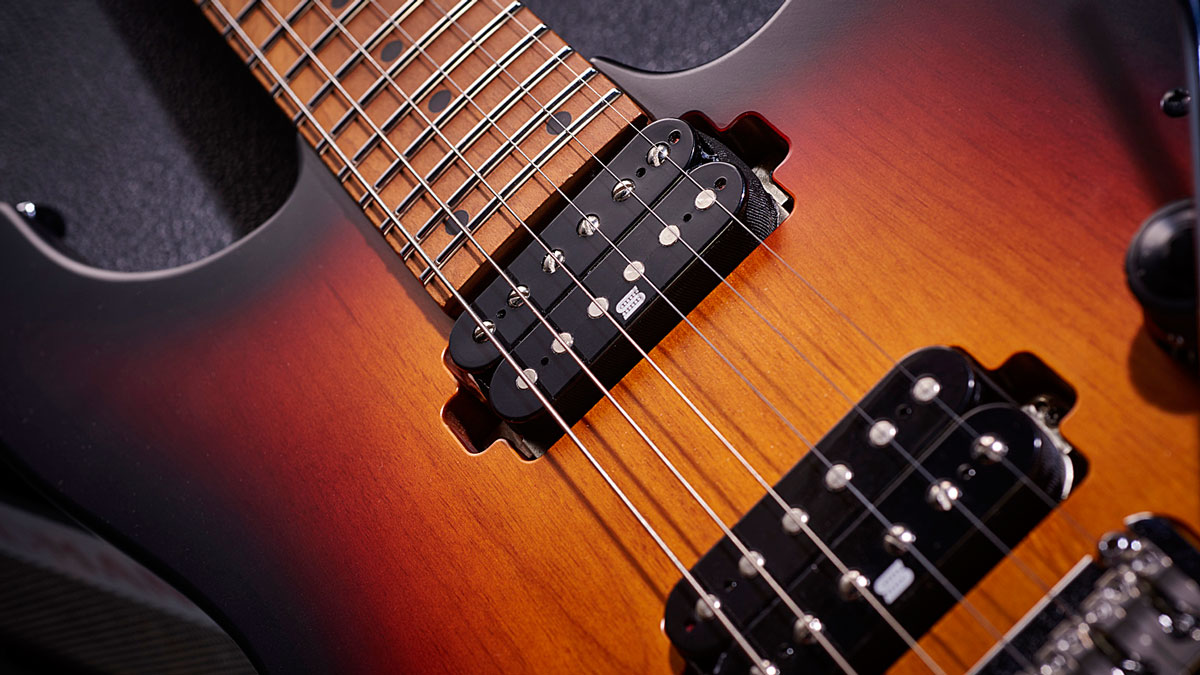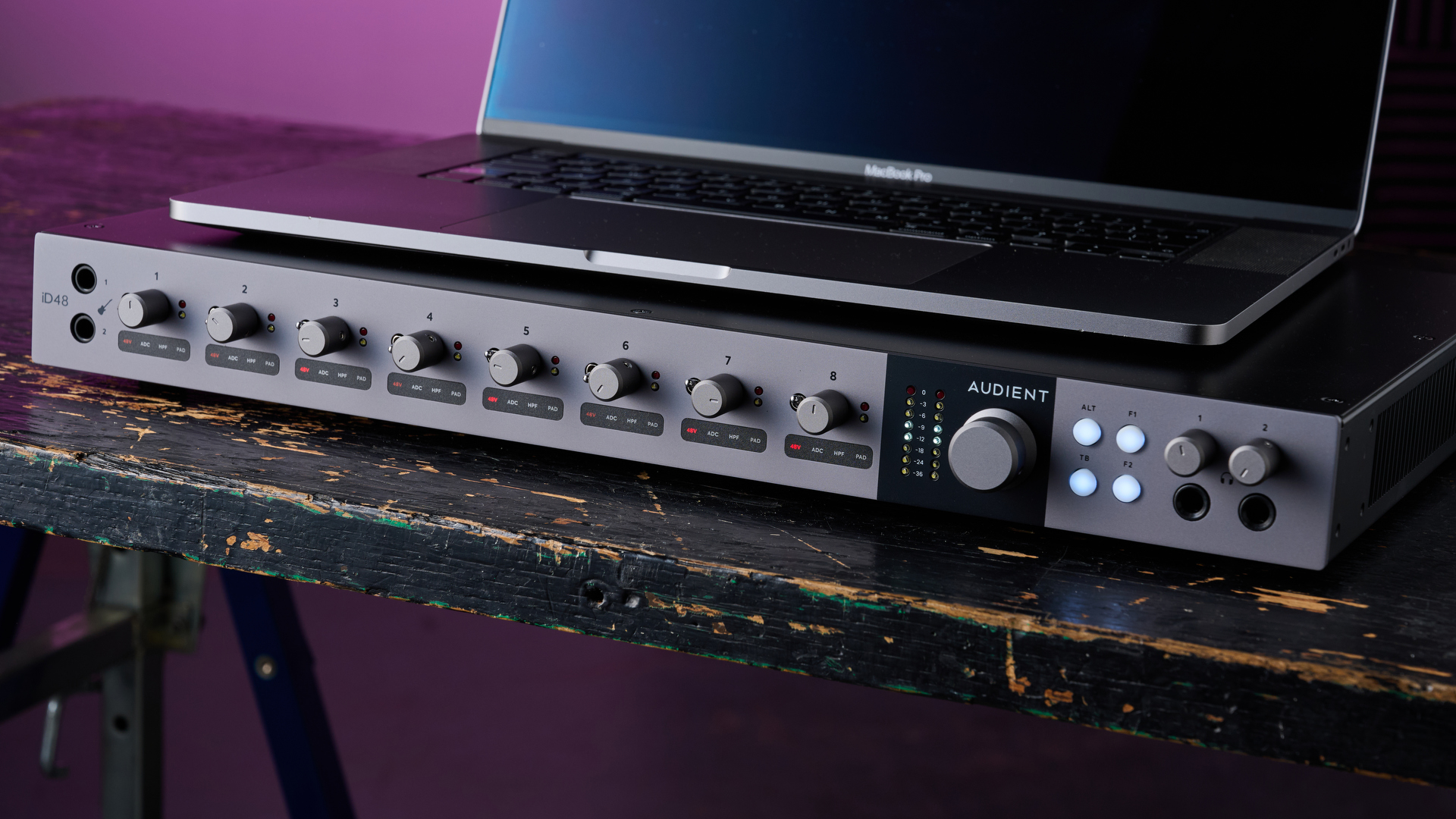MusicRadar Verdict
One of the more classic-looking models in the AZ series, the 204 delivers on every front: playability, tones and build quality.
Pros
- +
Smart build.
- +
Huge range of tones.
- +
Slick playability.
Cons
- -
No option for lefties.
MusicRadar's got your back
By design, the AZ series is all about function: a tool to do a job.
That said, both the body and neck adopt a more vintage bolt-on guise that’s less pointy, more classic than we’re used to from Ibanez. The body contour here, especially the rib-cage cut, is very deep and although the edge radius is pretty tight these are comfortable, familiar guitars.
All the recently-released AZs, as you’d expect, are based around the classic 648mm (25.5-inch) bolt-on scale length. There are both 22- and 24-fret models in both Prestige and Premium lines: the 22-fret models have an HSS pickup configuration and a Strat-meets-RG-style scratchplate; the 24-fret models have dual direct-mount humbuckers with no scratchplate and rear-mounted electronics. Bridge positions are the same on both 22/24-fret platforms, the 24-fret neck therefore sits slightly deeper into the body and as a result the treble cutaway is slightly deeper, too. Here, we’re looking at the Prestige AZ204-TFF.
It uses a heavily rounded ‘All Access’ body heel with four recessed screws that sit into inset washers; the heel area is slightly thinner in depth than the rest of the body and both cutaways have quite considerable scooping on the back, not the front. High fret access is easy.
Roasted maple is becoming the neck wood of choice for those serious about their bolt-ons. The Prestige models use something called S-Tech wood - a patented torrefaction process created by Sendai Technologies in Japan that “decreases the density and improves the wood’s dimensional stability. It also gives the wood a more uniformly dark appearance”.

Nuts are oil-impregnated bone and position markers are black dots on the face which do lack a little contrast on the dark ’boards but side dots are the modern must-have glow-in-the-dark types. Oh, and that headstock is far from pointy and employs a ‘vintage’ logo. It all helps to move the AZ away from Ibanez’s overly rock image.
The tuner is Gotoh’s SG381 with both height adjustable posts (HAP) and Magnum Locks. The former allow you set the post heights to maximize the string angle behind the nut although Ibanez still uses a string tree on the top two strings while the locking element self-locks as you wind on the string and unlocks - usually with a little help from a blade or coin in the top notched tip - as you unwind it. Once you get used to ’em they’re fine but both the locking element and setting the post heights can be, well, fiddly at first.
The vibrato bridge is based on Gotoh’s ‘modern classic’ 510 with two height adjustable and lockable pivot posts, plus a new-design knurled collar to tension the push-fit vibrato arm. The Prestige’s T1802 version uses nicely-shaped titanium saddles and a full steel block without deep drilled anchor holes.
Pickups and Control
Having gone to so much detail it’s little surprise we have a completely new set of AZ-exclusive pickups: Seymour Duncan Hyperion designed collaboratively, we’re told, with Duncan’s Maricela ‘MJ’ Juarez. The Prestige HSS pickups are clearly marked as originating from Duncan’s Custom Shop. They’re classed as ‘moderate’ output with Alnico 5 magnets.
This HH guitar features the dyna-MIX 10 system. Here with the Alter switch heading south we have: neck humbucker, inner slug coils of both in parallel, both humbuckers, outer screw coils of both in parallel and, lastly, bridge humbucker. In the upper position the Alter switch offers us ‘tap’ mode. Here ‘Power Taps’ are used on the humbucker selections (neck, both and bridge). Ibanez tells us that the “Power Tap uses one single coil plus a low signal from the other single coil.”
However, the DCR measurement doesn’t change in this mode so it’s not a coil-split, partial-tap or parallel linkage of the two coils: the more ‘single coil-like’ sound appears to be achieved with a passive RC (resistor and capacitor) filter on one single coil that uses small surface mount components placed on a PCB that’s fixed to the five-way switch. The in-between positions in this ‘tap’ mode voice the neck’s slug coil and then the bridge’s screw coil.
One final performance consideration is the placement of the output jack - on the guitar’s side, by the lower wide flange strap button, and angled so you thread your lead through your strap to secure it more easily.
Feel and sounds
Ibanez’s RG might rightly be one of the relatively few modern classic designs but its thin-depthed, wide and flat neck isn’t for everyone, not least those of us that like more traditional bolt-ons. While the spec, for example, on the Super Wizard HP - “the neck for shredders,” states Ibanez - offers a 17mm depth at the first fret, 19mm by the 12th with a nut with of 43mm and a ’board radius of 430mm (16.9"), the AZ’s neck is much more conventional measuring between 41.84mm to 42.38mm at the nut, 20.5 to 21mm at the 1st fret and between 23mm and 23.2mm at the 12th.
The ’board radius is rounder too and puts the AZ much more in line with modern Fender or Suhr. Neck relief, as supplied, is minimal, action heights are super low (0.9-1.2mm on the treble side at the 12th fret, 1.2-1.3mm on the bass side). The neck has an oil finish and will certainly need a little maintenance the more you play. A quick rub with a fine Scotch-Brite pad made them feel very satin-smooth.
The modern/vintage vibe certainly continues to the actual sound. This guitar does not have an overly resonant response: it’s quite firm but with oodles of zingy sustaining ring that’s a noticeable contrast to the woodier unplugged response of the more traditional vintage-y bolt-ons we have for comparison.
Getting your head around the sound options takes a little practice. As we said, the ‘standard’ mode is with that two-way Alter switch pointing down towards the tone control and with the bridge humbuckers measuring around 14.8k ohms (the neck ’bucker measures approximately 9k ohms), the single coils just over 10k ohms, these are far from vintage spec. The humbuckers impart a thick but not overly dark voice; the single coils, despite that overwound reading, sound full but nicely contrasting and well-balanced in context.
Clean it benefits from a little volume roll-off - there’s even a hint of a Rickenbacker’s unique growl
With no proper single coils, the 24-fret dual humbucker format models would seem to move away from Fender-like voicings. If we’re honest, a three-way switch for just the humbuckers would make this a hugely valid rock machine but there are another seven sounds to explore from the inner or outer single coils, to the solo slug and screw coils of the neck and bridge respectively. These sound a little thinner and brighter than the 22-fretters’ proper single coils but again, in context, they add huge stylistic versatility.
And then there are the ‘Power Tap’ voicings of either humbucker or both together. Now these don’t capture a ‘true’ single coil voice - we already have those. No, these PT voicings sit somewhere between a single coil and humbucker. There’s slightly more single coil-like hollowness compared to the full ’bucker’s direct power yet still with considerable humbucker depth.
Clean it benefits from a little volume roll-off - there’s even a hint of a Rickenbacker’s unique growl - while gained it provides another texture, especially so at the bridge. Indeed, in this secondary mode a different guitar emerges and having the solo single coils in the mix positions - then simply switching the Alter switch to introduce the inner or outer single coil mixes - gives immense Fendery flavour that’s far from the clichéd image of the none-more-rock RG.
Hugely interesting, this AZ model might well surprise many players who’ve pigeon-holed Ibanez as shred guitars for the masses. It certainly does that with plenty of potential for Floyd Rose-style whammy tricks (without the hassle of locks).
Dave Burrluck is one of the world’s most experienced guitar journalists, who started writing back in the '80s for International Musician and Recording World, co-founded The Guitar Magazine and has been the Gear Reviews Editor of Guitarist magazine for the past two decades. Along the way, Dave has been the sole author of The PRS Guitar Book and The Player's Guide to Guitar Maintenance as well as contributing to numerous other books on the electric guitar. Dave is an active gigging and recording musician and still finds time to make, repair and mod guitars, not least for Guitarist’s The Mod Squad.
Fantastic (free) plugins and how to use them: Full Bucket FB-3300
“It has the ingenious ability to give you easy routing to external hardware with no re-patching”: Audient iD48 review
“If this was real, it would be really impressive. But since it’s not real, it’s really impressive": Watch the bonkers four-note piano











